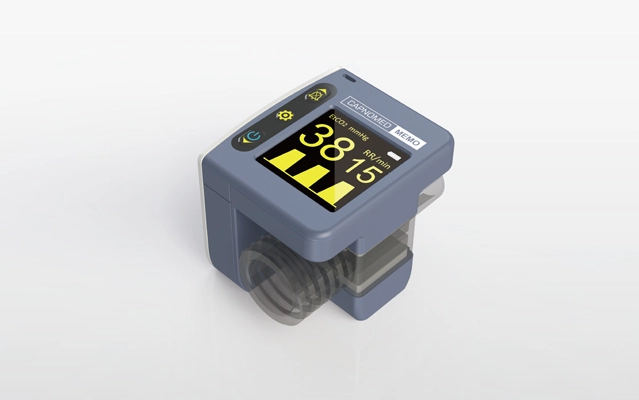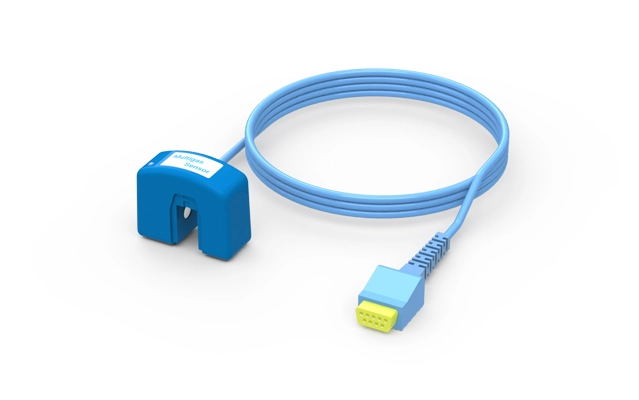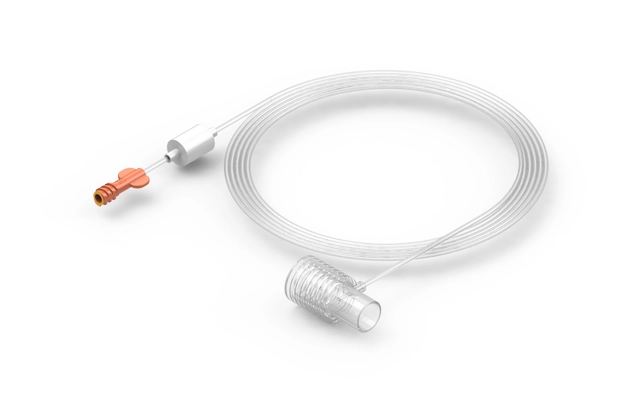The High Flow Nasal Cannula (HFNC) is a respiratory support device that has revolutionized oxygen therapy in recent years. Unlike traditional oxygen delivery systems, HFNC provides a high flow of air and oxygen mixture through a nasal cannula, delivering precise and controlled oxygen concentrations. This method has gained popularity due to its effectiveness in treating patients with respiratory distress, particularly those who require higher oxygen levels than what standard oxygen therapy can provide.
Importance of Understanding the Working Principle
Understanding how HFNC works is crucial for healthcare providers to optimize its use and ensure patient safety. Knowing the underlying mechanisms allows for better decision-making in clinical settings, helping to tailor the therapy to individual patient needs. As HFNC becomes more widely adopted, a clear comprehension of its working principle can lead to improved outcomes and enhanced patient care.
Applications in Modern Medicine
HFNC is used in a variety of medical scenarios, from emergency departments to intensive care units (ICUs). It has proven particularly valuable in treating patients with acute respiratory failure, chronic obstructive pulmonary disease (COPD), and even in managing respiratory complications in COVID-19 patients. Its ability to deliver humidified and heated oxygen at high flow rates makes it a versatile tool in respiratory therapy.
What is a High Flow Nasal Cannula?
Definition and Components
A High Flow Nasal Cannula is a medical device designed to deliver a high flow of oxygen-enriched air to patients in need of respiratory support. The system typically consists of a flow generator, an air/oxygen blender, a humidifier, and a heated circuit. The nasal cannula itself is a soft, flexible tube with prongs that fit into the patient’s nostrils, allowing for the direct delivery of the oxygen mixture.
Comparison with Traditional Oxygen Therapy
Traditional oxygen therapy, such as simple nasal cannulas or face masks, generally delivers oxygen at lower flow rates, often without humidification. These methods are sufficient for patients with mild to moderate oxygen needs. However, they fall short in situations where higher oxygen concentrations and flow rates are required. HFNC, on the other hand, can deliver oxygen at rates up to 60 liters per minute, providing more effective oxygenation and ventilation support.
Evolution and Technological Advancements
HFNC technology has evolved significantly over the past decade. Initially used in neonatal care, it has expanded to adult and pediatric patients due to its effectiveness and comfort. Recent advancements include more sophisticated flow generators, better humidification systems, and integration with monitoring devices that allow for real-time adjustments based on patient needs.
How Does High Flow Nasal Cannula Work?
Basic Working Principle
The basic principle of HFNC involves delivering a heated and humidified oxygen/air mixture at high flow rates through a nasal cannula. This high flow of gas creates a positive airway pressure that helps keep the airways open, reducing the work of breathing and improving oxygenation.
Role of Heated Humidified Airflow
One of the key features of HFNC is the delivery of heated and humidified air. This is essential because it prevents the drying of the nasal mucosa, which can occur with traditional oxygen therapy. The humidification also improves mucociliary clearance, helping to clear secretions from the airways, which is particularly beneficial for patients with respiratory infections or chronic lung conditions.
Mechanisms of Oxygen Delivery
Fraction of Inspired Oxygen (FiO2)
HFNC allows precise control over the Fraction of Inspired Oxygen (FiO2), which is the percentage of oxygen in the air being delivered to the patient. The FiO2 can be adjusted from 21% (room air) to 100%, depending on the patient's oxygen requirements. This level of control is critical in managing patients with varying degrees of hypoxemia.
Flow Rates and Their Impact
The flow rate in HFNC is another crucial factor. Higher flow rates help flush out carbon dioxide from the upper airways and reduce the dead space ventilation, which refers to the portions of the lungs where no gas exchange occurs. This results in more efficient breathing and better oxygenation. Flow rates can be adjusted based on the patient’s condition, typically ranging from 30 to 60 liters per minute.
Key Benefits of High Flow Nasal Cannula
Enhanced Patient Comfort
HFNC is designed with patient comfort in mind. The soft, flexible nasal prongs and the heated, humidified air make the therapy more tolerable compared to other oxygen delivery methods. Patients can talk, eat, and drink while receiving HFNC therapy, which improves their overall experience and compliance with treatment.
Improved Oxygenation and Ventilation
The high flow rates provided by HFNC ensure that patients receive adequate oxygenation and ventilation, even in severe cases of respiratory distress. This is particularly important for patients who might otherwise require mechanical ventilation or intubation. By improving oxygen delivery and reducing the work of breathing, HFNC helps stabilize patients and potentially avoid more invasive interventions.
Reduced Work of Breathing
HFNC reduces the effort required by patients to breathe, which is especially beneficial for those experiencing respiratory distress. The positive airway pressure generated by the high flow helps keep the airways open, making it easier for patients to inhale and exhale, thereby reducing fatigue and improving overall respiratory function.
Prevention of Intubation in Certain Cases
One of the significant benefits of HFNC is its ability to prevent the need for intubation in some patients. By providing sufficient oxygenation and ventilation non-invasively, HFNC can be an effective alternative to mechanical ventilation in certain cases, particularly in patients with moderate to severe respiratory distress.
Clinical Applications of High Flow Nasal Cannula
Use in Respiratory Distress
HFNC is commonly used in the management of acute respiratory distress, where it provides a non-invasive option for delivering high levels of oxygen. It is particularly effective in patients with conditions such as pneumonia, asthma, and COPD, where maintaining adequate oxygen levels is crucial.
Application in Post-Operative Care
In post-operative settings, HFNC is used to support patients recovering from surgery, particularly those who have undergone procedures involving the chest or abdomen. By providing efficient oxygenation and reducing the work of breathing, HFNC helps patients recover more quickly and comfortably.
Treatment of COVID-19 Patients
During the COVID-19 pandemic, HFNC became a critical tool in the management of patients with severe respiratory complications. Its ability to deliver high levels of oxygen without the need for intubation made it an invaluable resource in ICUs worldwide. HFNC provided a less invasive option for managing hypoxemia in COVID-19 patients, improving outcomes and reducing the burden on healthcare systems.
Pediatric and Neonatal Uses
HFNC is also widely used in pediatric and neonatal care. For neonates, HFNC provides a gentle yet effective means of delivering oxygen, particularly for premature infants with underdeveloped lungs. In pediatric patients, HFNC helps manage conditions such as bronchiolitis and other respiratory infections, providing much-needed respiratory support in a non-invasive manner.
Potential Risks and Limitations
When HFNC Might Not Be Appropriate
While HFNC is beneficial in many cases, it is not always appropriate. Patients with severe respiratory failure or those who cannot maintain their airway may require more invasive support, such as mechanical ventilation. Additionally, HFNC may not be suitable for patients with significant upper airway obstruction.
Risks Associated with Improper Use
Improper use of HFNC, such as setting inappropriate flow rates or FiO2 levels, can lead to complications. These might include barotrauma (injury to the lungs from excessive pressure) or oxygen toxicity, particularly in patients who are more vulnerable. It is essential for healthcare providers to be trained in the correct use of HFNC to minimize these risks.
Limitations in Severe Cases
In severe cases of respiratory distress or failure, HFNC may not provide sufficient support, necessitating the need for mechanical ventilation. While HFNC can prevent intubation in some cases, it is not a substitute for more aggressive respiratory support when it is required.
How to Set Up and Monitor HFNC Therapy
Step-by-Step Setup Guide
Setting up HFNC involves several key steps:
Assemble the Device: Connect the flow generator, humidifier, and air/oxygen blender.
Attach the Nasal Cannula: Ensure the nasal prongs fit comfortably into the patient’s nostrils.
Set Flow Rate and FiO2: Adjust the flow rate and oxygen concentration according to the patient’s needs.
Humidification and Heating: Set the desired temperature and humidity level for the air being delivered.
Monitoring Patient Response
Monitoring is crucial when administering HFNC therapy. Healthcare providers should regularly check the patient’s oxygen saturation levels, respiratory rate, and overall comfort. Any signs of worsening respiratory function should prompt a re-evaluation of the therapy.
Adjusting Settings for Optimal Care
HFNC settings should be adjusted based on the patient’s response. This includes modifying the flow rate, FiO2, and humidification settings to ensure the patient receives the most effective and comfortable therapy. Continuous monitoring and adjustments are key to optimizing the benefits of HFNC.
The High Flow Nasal Cannula is a versatile and effective tool in respiratory care, offering significant benefits in terms of patient comfort, oxygenation, and the potential to avoid more invasive treatments. Understanding its working principle and proper use is essential for healthcare providers to maximize its benefits and minimize risks.
As technology continues to advance, HFNC is likely to play an increasingly important role in respiratory therapy. Its ability to provide high levels of oxygen in a non-invasive manner makes it a valuable option for a wide range of patients, from neonates to adults with severe respiratory conditions.
 English
English










